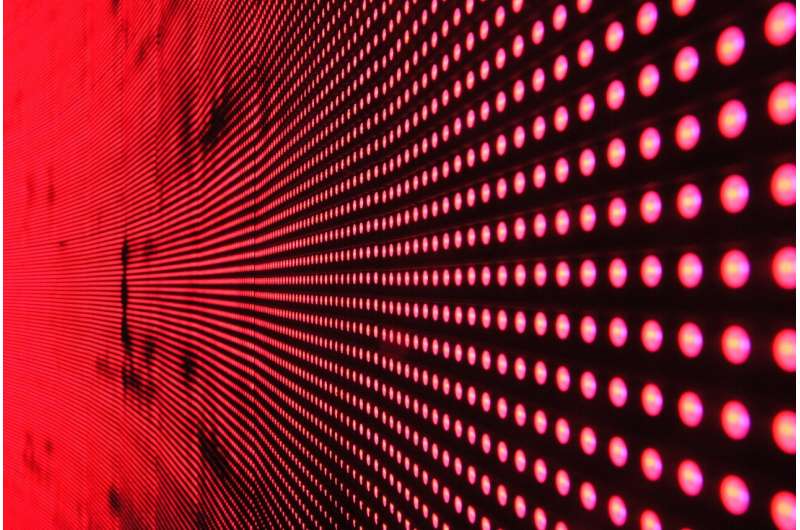Credit: CC0 Public Domain
Indium gallium nitride (InGaN)-based, blue-light-emitting diodes are the backbone of solid-state lighting (SSL). Unfortunately, their efficiency peaks under low current densities (<35 A/cm2) and rolls off under high injection levels. This effect is called efficiency droop, and requires a design tradeoff between light output power, efficiency, and cost.
It is widely accepted that Auger recombination is the main cause for the experimentally observed large (~50%) efficiency droop in III-Nitride LEDs. Yet, there is no clear understanding of the origin of the magnitude of Auger recombination in this material system. For instance, measured Auger coefficients are obtained by assuming that the electron (n) and hole (p) densities are identical, i.e., n = p. This ambipolar Auger coefficient (Ca) is calculated as the sum of the Auger coefficients for the eeh (Cn) and the hhe (Cp) channels, i.e., Ca = Cn + Cp. For piezoelectric materials such as III-Nitride LEDs, the carrier symmetry is adversely plagued by the polarization, implying the Auger electron–hole asymmetry between Cn and Cp (and hence their ratio, Cn/Cp) might play a critical role in understanding the efficiency droop and quantify the Ca. In most experiments and simulations, Cn/Cp is taken as unity (~1), ignoring the Auger electron–hole asymmetry effect on the efficiency droop.
In a recent paper in the IEEE Journal of Quantum Electronics, U of I researchers report a new open boundary quantum LED simulator based on variational principles to show that electron-hole asymmetry in the Auger recombination is a strong candidate for the origin of the large (~38%) efficiency droop in InGaN-based LEDs. Indeed, the authors show that ignoring the Auger electron-hole asymmetry overestimates the ambipolar Auger coefficient (defined by the equality between electron and hole Auger coefficients) by as much as 62 percent, leading to a misinterpretation in the fundamental limits of InGaN-based LEDs.
More information: Yi-Chia Tsai et al, Effect of Auger Electron–Hole Asymmetry on the Efficiency Droop in InGaN Quantum Well Light-Emitting Diodes, IEEE Journal of Quantum Electronics (2021). DOI: 10.1109/JQE.2021.3137822
Provided by University of Illinois at Urbana-Champaign
























